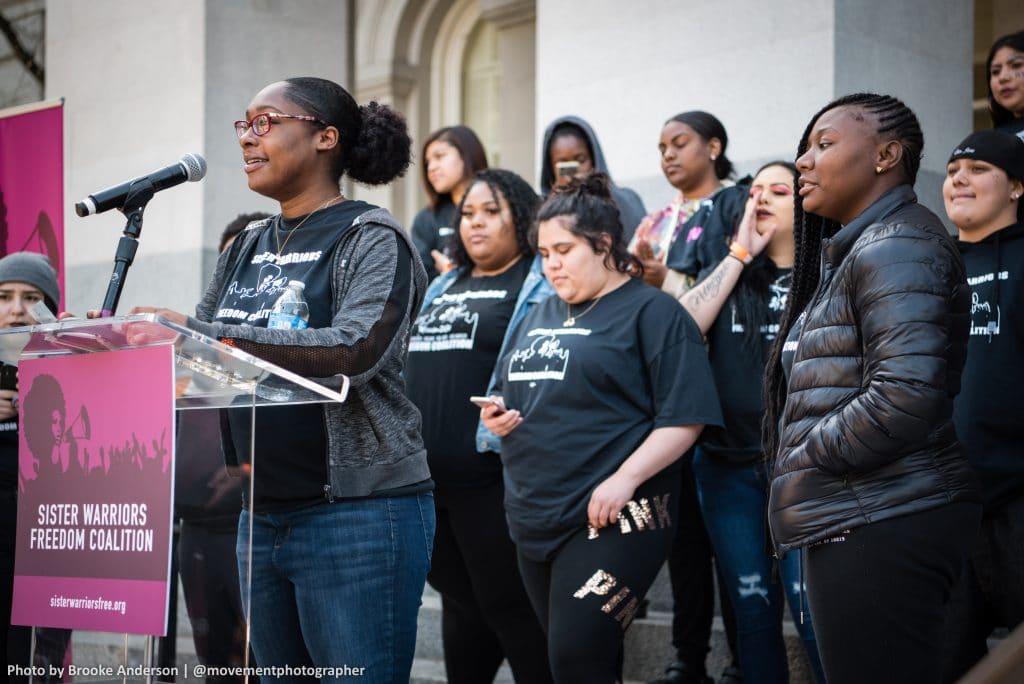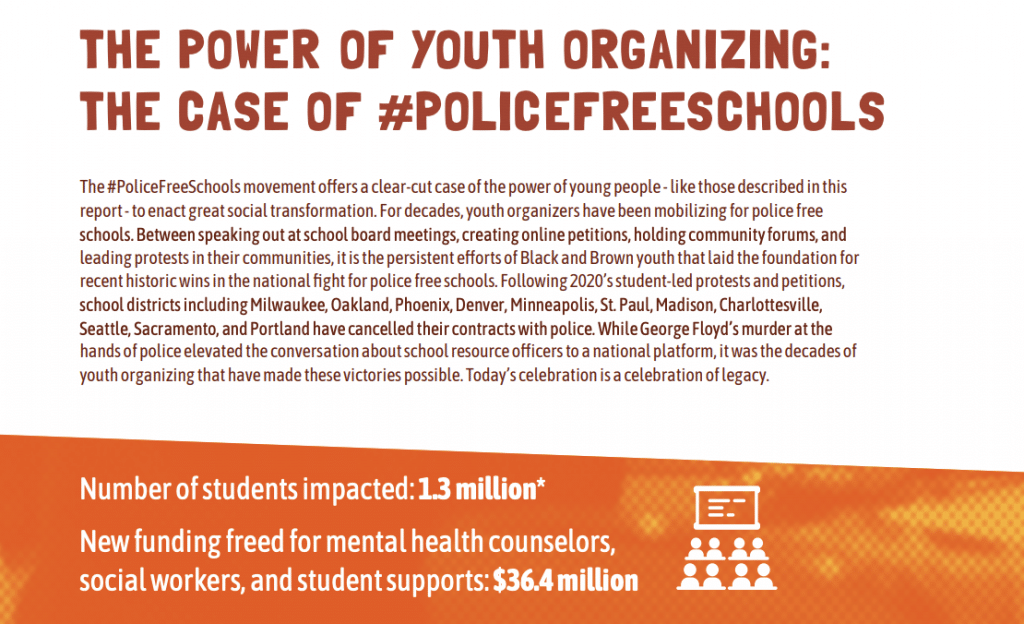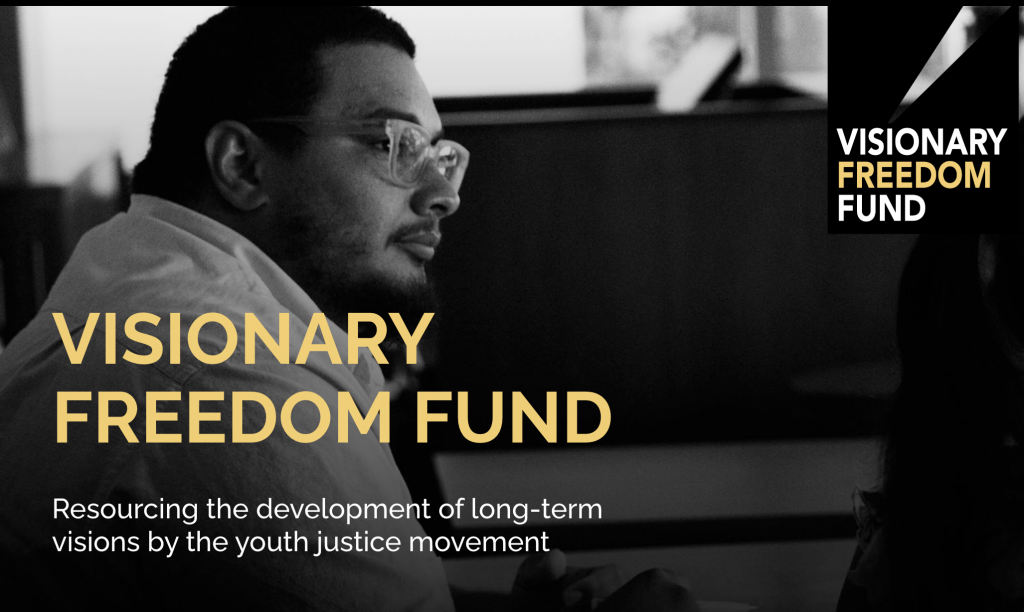6 Ways Funders Can Support Visionary Freedom
How funders can challenge white supremacy, shift power and follow the lead of youth organizers and BIPOC communities
By Manuela Arciniegas, Bryan Perlmutter and Jessica Pierce
Society is battling threats on multiple fronts: The pandemic, ongoing police brutality and anti-Black violence, rapid climate change and the cascading effects are falling squarely on the shoulders of Black, brown and Indigenous youth and their communities.

Despite facing mounting challenges, young people and community organizing groups are articulating solutions and realizing substantial wins — and have been doing so for decades.
Youth-led organizers have championed the call for divesting from prisons, defunding the police and investing more in education, housing and social services. They have helped elevate these demands to the mainstream dialogue, contributing to momentum behind a new federal bill called the BREATHE Act and some public schools ending their contracts with police.
We in philanthropy who work closely with young leaders know that resourcing youth organizing groups is part of the formula for social change. Yet, foundations give roughly $200 million per year to youth organizing — a drop in the bucket compared to $1.8 billion in funding for youth development. And few funders give youth a direct say over where and how these funds should be deployed.

So why aren’t more funders giving youth organizers more grants over the long haul? Why are we afraid to follow the leadership of young people and cede decision-making power?
White supremacy is holding funders back
Philanthropic refusal to listen to grantees and, beyond soliciting advice, formally committing to position directly impacted people at the decision-making table, is our largest deficiency as a sector. For far too long, too many funders have talked about sharing power with grantee partners, only to end up stalled in the land of theory and no action.
Communities would rightfully pull our grant and refuse to fund us ever again were the power dynamic to be reversed. Yet, while we have seen a number of participatory grantmaking models in action, most foundations have delayed creating formal mechanisms that give communities a direct say over grants.
A large reason why is the continued influence and power of white supremacy.
Inherent to white supremacy is that Black, Latinx, Asian American and Indigenous youth and their communities are unequal to white communities and unworthy of equal power, access, and economic investment. White supremacy has excluded BIPOC communities and their intellectual powers from the mainstream narratives and closed doors to the rooms where decision-making happens, treating them as incapable of managing their own economic and political power.
Philanthropy, much like our national identity and economy, was originally constructed on a foundation of white supremacy. Like it or not, it has and continues to shape how foundations work. Most philanthropic institutions fund organizations that they believe have the best ideas, strategies and shots at success. Often, their confidence is rooted in the false narrative that wealth equals expertise and that, as a result, some community-based nonprofits, especially in Black, Indigenous, People of Color (BIPOC) communities, can’t possibly have better solutions than their foundation colleagues.
However, what would happen if we widely practiced a philanthropic model that requires funders resource organizations that movement groups believe are best positioned to lead and deserve resources?
What would happen if we acknowledged the white supremacist elephant in the room, let alone do something about it?
The opportunity to build aligned, lasting power
The question of stewardship of resources and decision-making power is where philanthropy can contest white supremacy. In reflecting on philanthropy’s practices, funders have the opportunity to transform themselves from the inside out.
In doing so, they can transfer power to directly impacted youth and build long-term power for BIPOC communities. More importantly, we can ensure that resources are deployed precisely where they are needed most — from the perspective of communities who carry the burden and live the impact.
6 Steps toward visionary freedom
Here are 6 steps funders can take to challenge white supremacy, shift power to communities and support youth-designed transformative, visionary freedom:
1. Reckon with racism, white supremacy and power.
Funders must make time to do the personal work of learning about and undoing racism, white supremacy and power.
There is a wide gap between the lived experiences of those with more access to wealth and low-income, BIPOC communities, which is evident in the family philanthropy sector. To bridge this gap, trustees and staff must commit to education and set aside the time to become anti-racist.
Board and staff must take this learning journey together to understand, identify and actively change the policies, behaviors and beliefs that perpetuate racism. This will help heal the harm caused by institutional and generational racism often shouldered by communities and staff of color.
It will also open foundations to a culture of not just listening but acting accountably. It can widen the entry way for traditionally overlooked and excluded youth and communities to participate democratically and begin the accountability and healing process required to truly end the harm caused by racism.
2. Bring youth and communities to the table.
Sometimes funders believe it’s not possible to include youth voices in decision-making. But in reality, there are several funder collaboratives that closely engage BIPOC youth organizing groups so that those closest to the problem inform funding to their communities.
These models build relationships and skills for youth and funders and root decisions in the lived experiences and realities of those who will directly benefit from the change being funded.
The Funders’ Collaborative on Youth Organizing, Grantmakers for Girls of Color and the Communities for Just Schools Fund are exemplars of how to consult, involve and value the voices of youth organizers.
The Native Voices Rising Fund has committees of youth and community members who actively direct grantmaking. The abundance of investment opportunities shows that we only need to unlock the willingness to share capital with communities in poverty.
3. Nurture and fund interdependence.
We must prioritize funding in intersectional, interconnected and collaborative ways, and support networks of organizations to steward resources together.
This approach promotes interdependence and collective problem-solving. The California Funders for Boys and Men of Color aligns resources and networks held by the CEOs from the state’s leading philanthropic institutions to support a constellation of groups serving BIPOC men and boys, helping lessen competition and support collaborative approaches.
Justice Funders have developed a Resonance Framework to support foundations in democratizing power and shifting economic control to communities while reducing extraction and promoting a just transition.
4. Be accountable to communities.
In practice, the threshold for movement leaders to be deemed expert enough to sit on philanthropic advisory boards is inequitable, by far surpassing the requirements to sit on family philanthropy boards.
If philanthropy wants to catalyze change beyond grant life cycles, it must be willing to cede decision-making power to those directly impacted by how those dollars will flow to youth-led work. The Decolonizing Wealth Project regularly educates donors on the imperative of shifting power and returning resources to communities as a path towards collective healing.
Electing directly impacted youth community board members, building funding advisory councils and moving resources to participatory grantmaking vehicles are just some of the necessary commitments that would proactively support youth leadership.
Hiring staff from the organizations and communities they fund and creating leadership pipelines for young people for these positions would not only provide additional support, but also help increase foundations’ accountability to communities and the movements that sustain them.
5. Engage in solidarity philanthropy.
Funding visionary work requires a deep level of trust, and the burden is on funders and trustees to extend trust to their partners — especially young people.
Many of the antiquated rules funders follow slow grantees and funders down. Part with these practices! Trust-based philanthropy outlines a set of 6 principles that we can collectively use. We must create diverse learning and action spaces dedicated to building solidarity relationships with movements, like the Visionary Freedom Fund (VFF) or Funders for Justice.
To follow the lead of directly impacted communities and learn how they are networked and collaborate, funders must build authentic relationships with those communities and examine biases against youth leadership. Foundation staff should do the heavy lifting.
6. Join the Visionary Freedom Fund learning community.
The Andrus Family Fund’s recently-launched VFF is an example of participatory grantmaking that moves decision-making power to young people directly impacted by the youth justice system. VFF’s Power Table has convened 8 youth organizers with a broad vision of what their communities need to thrive, 4 adult movement leaders and 11 funders to collaboratively determine where the $2.6 million initiative should distribute its resources.
As we embark on this experiment to design new grantmaking structures rooted in collectivism, interdependence, transferring power, right relationship and creative visioning, we invite other funders to join the VFF Learning Community. Together, we can learn and act toward transformative change for youth and their communities.
Manuela Arciniegas is director of the Andrus Family Fund, a program of the Surdna Foundation. Bryan Perlmutter and Jessica Pierce are principles and co-founders at Piece by Piece Strategies.
This article was first published by the National Committee for Responsive Philanthropy.


